April 2015. My first conversation with Edward O. Wilson, the famous Harvard biologist, was forty years ago. We were sitting on an old couch on the front porch of my rented house in a neighborhood called “The Hill” in Boulder, Colorado. It was only a few blocks from the campus of the University of Colorado, where I was in my first year of graduate school. Wilson had just published his groundbreaking book on the evolution of animal and human social behavior, Sociobiology: The New Synthesis, and it was generating a good deal of “buzz” – even controversy.
We shared ideas and perspectives back and forth for weeks on end in that beautiful Colorado summer, the mornings cool and sweet, with blue skies the color of heaven, and afternoons likely to generate a passing thunderstorm, whose giant cumulonimbus anvils off to the east, about when I would go for my end-of-the-day run along the trails of the Boulder Mountain Park, were touched by the yellow and salmon colors of sunset, and were another part of heaven too. Late that summer the City of Boulder, trying to shed its image as a 1960s hippie town, decided to “beautify” the neighborhood, and sent everybody a letter saying that no couches could be placed on porches. I ignored it, but one day I came home from classes and found that the old couch, which belonged to the landlord anyway, had been hauled away.
Well, E.O. hadn’t really sat on that couch with me – it was just me and his Sociobiology – but it was a great summerlong conversation. I was still in grad school a few years later when his next book, On Human Nature, was published, and I read that while the aspens turned yellow and gold in the high country and the peaks got their first dustings of snow.
And now comes what is for me E.O. Wilson’s “bookend” book, The Meaning of Human Existence, published in late 2014. We are each forty years older than when we first conversed, of course, and Wilson, born in 1929, is now almost 86 years old. To me, and to others who have read his latest book, he seems to be trying to sum it all up again, in another new and grand synthesis of what his lifetime of research and thought may mean for all of us. It is ambitious, and probably will be read by some people as pretentious. But it deserves having a good, long, deep conversation with. And so I did, over many an evening here on my old couch in a suburb of Washington, DC.
One of the things that has been so stimulating and enjoyable in my forty-year conversation with E.O. Wilson is that it has always been a debate. My penciled notes in the margins of his books are full of questions, and jump back and forth from “brilliant!” to “bullshit!” My notes in The Meaning of Human Existence are the same as ever.
Wilson writes “The human mind did not evolve as an externally guided progression toward either pure reason or emotional fulfillment. It remains as it has always been, an instrument of survival that employs both reason and emotion. It emerged in its present form from a labyrinth of large and small steps, in a series that is one out of millions possible.” My note says “Bravo! This is a clear and true point.”
And then “We’ve considered thus far the biological origins of human nature, and from this information the idea that a large part of human creativity is generated by the inevitable and necessary conflict between the individual and group levels of natural selection,” and, “The products of the opposing two vectors in natural selection are hardwired in our emotions and reasoning, and cannot be erased. Internal conflict is not a personal irregularity but a timeless human quality.” I agree, “Yes – we are definitely a species conflicted by our evolutionary history.”
Then he writes “We will be existential conservatives, choosing not to invent a new kind of mind grafted on top of or supplanting the admittedly weak and erratic dreams of our old mind.” My margin notes say “But this makes us, as you said, tribal, violent, and totally unfit and unadapted to control our culturally-driven technology that seems to be destroying the life support systems of the planet…”
And then he says “They should heed what I believe is a universal principle…: there exists only one habitable planet, and hence only one chance at immortality for our species.” Yes, and yes again. On the whole, my marginal notes salute Wilson for his knowledge and insights, even while disagreeing with him on some points.
————–
Back in graduate school, already fascinated by behavioral genetics from my undergraduate studies, and wanting to be part of this emerging “New Synthesis” Wilson was writing about, I chose for my doctoral research a problem in ecological behavioral genetics. My research subject was an intertidal marine snail of the Pacific Coast,Tegula funebralis, the black turban snail. That forced me to spend the better part of three summers in Oregon and Washington, getting up early for low tides, but otherwise eating lots of salmon and watching glorious sunsets. Scientific research can be tough!
One of the commonest residents of the intertidal zone where my snails lived is Anthopleura elegantissima, whose common name, the aggregating anemone, doesn’t do justice to its elegant scientific binomial. I’d already discovered a 1973 paper by Lisbeth Francis of the University of California, Santa Barbara, with the intriguing title “Intraspecific Aggression and its Effect on the Distribution of Anthopleura elegantissima and Some Related Sea Anemones”. What Francis described in her paper was intertidal war between anemone groups. She was already exploring a topic of Wilson’s “New Synthesis” – anemone sociobiology – before Sociobiology was published. One wouldn’t necessarily guess that anemones, one of the simplest types of animals that exists, would provide a revealing glimpse into the evolution of animal aggression and even human war. But Francis’s humble research showed how they do.
I’d already experienced the weaponry of Anthopleura elegantissima, years earlier, so I had perhaps more of an appreciation for the evolved armaments of this species than your average person wandering into the tidepools would. Anemones are members of the Phylum Cnidaria, to which jellyfish and corals also belong. These are simple organisms – one indication is that their one bodily opening serves as both mouth and anus. Cnidarians all have stinging cells that fire tiny harpoon-like structures to bind and poison their prey. If you touch an anemone it feels sticky or tacky – that feeling is from all those tiny harpoons anchoring into the skin of your finger. But I didn’t really believe that when I first felt it, so Bill Arbus, the director of the marine science camp I attended in high school said: “OK, try this: touch it with your tongue.” I was a curious kid, and tried Bill’s suggestion. Wow! Or yow! If you really want a jolt, all you have to do is lick an anemone. On the thin skin of the tongue those nematocysts penetrate and give their full effect – it felt like a burn from extremely hot coffee. I must admit I perpetuated this experiment on many more students at that marine science camp after I went on to teach there, in the name of biological education. Nowdays I probably would have been sued. I tried it again many years later, and found that the tip of my tongue was numb for a month.
What Lisbeth Francis had noticed is related to my personal experience of anemone nematocysts, but more surprising. She found that not only does Anthopleura elegantissima have the usual prey-catching nematocysts on its feeding tentacles, which I’d “tasted” on my tongue, but also has specialized super-nematocysts, called acrorhagi, for fighting other anemones. She had discovered the equivalent of nematocyst “nukes.” Well, not quite, but her discovery came after observing that this common intertidal anemone occurred either as well-spaced solitary individuals in some habitats, or as patches of small anemones with spaces between the patches. She knew that the patches of small anemones are made up of genetically-identical individuals, created by through asexual reproduction. Her attention was drawn by what she called the “anemone-free spaces” between the patches, and through her research to explain these patterns of anemone distribution, she discovered anemone aggression and its weaponry, the acrorhagi. After reading her paper, I looked for the same pattern around my snail-study tidepools, and found it to be ubiquitous. Anthopleura elegantissima is a species at war.
I tried to adopt Wilson’s new sociobiological view to understand this pattern in the everyday tidepools. What counts for an anemone is space on the intertidal rock. The tides bring food, whether living prey or edible detritus. If you are an anemone and can stake out some space, you can eat – but there are other hungry anemones who want that food too. Hence, in Darwin’s “struggle for existence,” one solution to the struggle for space on the rock is for you and your anemone clonemates is to fight for it. Not hard to imagine how the elegant Anthopleura elegantissima evolved deadly fighting abilities. When an individual of this species is touched by another anemone that is genetically different, its acrorhagi – the fighting tentacles arrayed in a single ring below the multiple rings of feeding tentacles – inflate, preparing for battle. The anemone’s body rears back, like a boxer getting ready to punch, then strikes in the direction of the alien anemone’s touch, perhaps giving a wounding blow to the foreign anemone with its fighting nematocysts.
————–
The group selection that Wilson argues has created our unique species was made possible, and enabled, by our cultural and technological evolution in a positive-feedback process. Human technology leaped from the crude stone tools of Olduvai Gorge to hydrogen bombs in only two million years. But nowhere in The Meaning of Human Existence does Wilson discuss nuclear weapons and the risk of nuclear war – although he mentions it once, in passing. I grew up in Los Alamos, New Mexico, the town where the atomic bomb was invented, and nuclear weapons and war were never far from my mind.
J. Robert Oppenheimer, the great physicist and “father” of the atomic bomb, intuitively knew that the world had changed irrevocably when he witnessed the Trinity test of the first atomic bomb in the New Mexico desert. He later described his feelings after Trinity: “We knew the world would not be the same… I remembered the line from the Hindu scripture, the Bhagavad-Gita. Vishnu is trying to persuade the Prince that he should do his duty and to impress him takes on his multi-armed form and says, ‘Now, I am become Death, the destroyer of worlds.’ I suppose we all thought that, one way or another.”
No species evolved on Earth can comprehend nuclear forces or the destructive power of nuclear weapons – these are evolutionarily, and therefore existentially, new. Humans can understand fire; we evolved taming it. And so we can understand conventional explosives and weapons, which are chemical reactions – really just concentrated fire. But we cannot – can never – grasp or understand the nuclear forces of fission and fusion, millions and billions of times more powerful than chemical reactions, which our technologists have packaged into nuclear weapons. These are essentially extraterrestrial forces, the forces of the sun, stars, and supernovae.
Although he does not talk about nuclear weapons and war in The Meaning of Human Existence, Wilson devotes a chapter to speculation about whether other highly social, technological species could have evolved elsewhere in the Universe, concluding with good reason that they may have, and would probably share many characteristics with us. He titled the chapter “A Portrait of E.T.,” referring to the “Extra-Terrestrial” humanoid of the 1982 Steven Spielberg film. In the Ronald Reagan years of the 1980s, Reagan and his Secretary of Defense, Alexander Haig, were casually talking about popping those pesky Ruskies with a few tactical nuclear weapons if they got too frisky in Eastern Europe – and the U.S. antinuclear movement was in high gear to try to stop a Reagan-initiated nuclear war. Back then one of the main hypotheses about why the “search for extraterrestrial intelligence” hadn’t detected any electromagnetic signals from space was that any highly-advanced technological species in the Universe, like our own, was likely to have caused its own extinction so soon in its evolution to “high technology” that its electromagnetic signature would have existed for such a short time that the chances that we would detect them were infinitesimally small. Wilson doesn’t mention that pessimistic argument in The Meaning of Human Existence. Nor does he mention the hypothesis, very prominent and widely discussed at the time, that a nuclear war would likely cause a “nuclear winter,” perhaps equivalent to the period of global darkness, cold, and ecological collapse that previous asteroid impacts may have caused, triggering mass extinctions such as the Cretaceous-Tertiary Extinction, 65 million years ago, when the dinosaurs and many other species died out.
The average mammalian species, over the course of the last 65 million years, seems to have survived for somewhere around one to two million years before it either became extinct or evolved into a different species. Less than 100,000 years ago our species, Homo sapiens, began to speed up the background extinction rates for other species with our culturally-evolved technologies – control of fire, hunting, agriculture, and our use of steam-powered and later fossil-fuel-powered machines. We have now became an evolutionary force on the planet equivalent to asteroid impacts and other cosmic disasters that caused previous mass extinction events. Now we are in what some people are calling the Anthropocene, another mass extinction event caused by human technology. All of us experience this period in history as relatively normal, but the Anthropocene may be the tip of the iceberg compared to what our technology is capable of. Which is nuclear war, nuclear winter, and a mass extinction that would rival or exceed those previously experienced in the evolution of life on Earth.
————–
Wilson’s use of the phrase “The New Synthesis” as the subtitle of Sociobiology echoes the phrase “The Modern Synthesis,” used in 1942 by British biologist Sir Julian Huxley as the subtitle of his book, Evolution: The Modern Synthesis. That “modern synthesis,” which developed between 1936 and 1947, reflected a consensus about how evolution proceeds genetically and ecologically. The Modern Synthesis is still, to a large extent, the current paradigm in evolutionary biology. Huxley’s contemporary, Sir Alister Hardy, is attributed as the source of an alternative, and perhaps slightly sardonic, scientific name for our species: Homo religiosus.
Perhaps it’s no wonder that the biological and cultural evolution of language, and the symbolic and metaphorical communication it represents, would lead to “religion.” Religious behavior evolved to solidify group identity, aiding and abetting the group selection that Wilson argues is a key to understanding the meaning of human existence. Nowhere was this sociobiological selection for religious behavior stronger than in the desert cultures of the Middle East. There, in one of the harshest and least hospitable ecosystems on Earth for humans, pastoralism was the only viable human niche, except in the irrigated river valleys. The arid and seasonal pastoral environment favored the cultural evolution of an intense tribalism, both clannish and violent. Water sources and grazing lands were scarce, and the source of intense competition. Anything a group could do to outcompete another group seeking the same grass and water was beneficial – including inventing tribal religions that dehumanized and demonized the other groups.
Perhaps it’s no wonder that in these sparse environments, pastoral people would imagine only one “god,” rather than the diverse and inclusive pantheon of nature gods and goddesses – for trees, animals, springs, rivers, and lakes – that emerged from cultures living in lusher and more forgiving ecosystems. And perhaps it’s no wonder that they would invent a mobile way of worshipping – rather than sacred groves, or “golden calves” and other “graven images,” which might be hard to lug around the desert on your donkeys or camels, they became the people of the “Book,” who carried the “Word” with them and worshipped that in their Torah, Bible, or Koran. The Middle Eastern monotheisms – Judaism and its spinoffs of Christianity and Islam – have taken faith-based tribalism to its highest level of cultural evolution. And so perhaps it is no wonder that the Middle East has been in a state of perpetual war for at least 3,000 years. Israel, Gaza, Syria, the Islamic State, Somalia, Iraq, Yemen, Libya, Iran: every day’s breaking news brings new stories about this aspect of human sociobiology. Unfortunately, it’s not new news. It makes perfect sociobiological sense.
In The Meaning of Human Existence , far more strongly than ever before, Wilson confronts the link between what he calls the “great religions” and human tribalism. “The great religions are also, and tragically, sources of ceaseless and unnecessary suffering. They are impediments to the grasp of reality needed to solve most social problems in the real world. Their exquisitely human flaw is tribalism. The instinctual force of tribalism in the genesis of religiosity is far stronger than the yearning for spirituality.” Note two interesting, and I assume deliberate, word choices. Wilson calls tribalism “instinctual” in our species – that is, hard-wired in our genes by our evolutionary history. And note “religiosity” – for him this tribal religionism is not true “religion” or spirituality, but something lesser, and more dangerous. Wilson should have noted that what he was thinking of when he said “great religions” were the Middle Eastern monotheisms – not Confucianism, Taoism, Hinduism, or Buddhism, which together would encompass the vast majority of the rest of followers of major established “religions” – but which are not nearly so exclusionary and fanatical.
Combined with our technological prowess that grew exponentially, our tribalism is probably a recipe for the premature extinction of our species. As Wilson says, we have deeply-evolved, “built-in” contradictions. The only question is: will our cultural evolution and creativity be able to save us from… ourselves? What comes to mind is the phrase the cartoonist Walt Kelly put into the mouth of Pogo, the ‘possum from the Okefenokee Swamp. Kelly was modifying, ever so insightfully, the historic statement by Commodore Oliver Hazard Perry during the War of 1812, reporting a victory in the Battle of Lake Erie – “We have met the enemy and they are ours.” Our evolutionary – sociobiological – contradictions may be our undoing. Certainly we are our own worst enemy.
————–
E.O., please sit down – sorry, the couch is old. Something to drink? Water, cup of tea? Or… I see it’s getting on toward evening… those sunset colors… maybe a small splash of Maker’s Mark on ice? OK, bourbon it is!
Professor Wilson, here’s to your health! Salud! Thanks for your books and all, over all the years. Good stuff, really good. I look forward to your next synthesis, and hope we can keep up the conversation for another decade, at least! I need to hear your ideas about how we are going to evolve our way out of this evolutionary mess we find ourselves in.
What I’ve been wondering is, what’s wrong with this picture you have been helping me assemble over the past four decades? Our one and only habitable planet in the Universe is totally covered up with the human sociobiological equivalent of anemone clones, all of them fighting at the margins, and all bowing down to their own version of the Anemone God, claiming that all the other anemones are demonic infidels! And they are all armed with nukes – the energy of the sun in the tentacles of these creatures who up to now have only known nematocysts! I know you are a congenital optimist, E.O., but convince me that I’ve taken you all wrong, please, before it’s too late!
For related stories see:
Related links and sources:
- Sociobiology: The New Synthesis
- The Meaning of Human Existence
- Intraspecific Aggression and its Effect on the Distribution of Anthopleura elegantissima and Some Related Sea Anemones. Lisbeth Francis, 1973.
- Aggression, Habituation, and Clonal Coexistence in the Sea Anemone Anthopleura elegantissima. Ayre and Grosberg, 1995.
- Video of J. Robert Oppenheimer quoting the Bhagavad Gita, “Now am become death, the destroyer of worlds.”
- Anthopleura elegantissima, the Aggregating Anemone
- “We have met the enemy and he is us.” Pogo by Walt Kelley.
- Maker’s Mark Kentucky Bourbon Whiskey

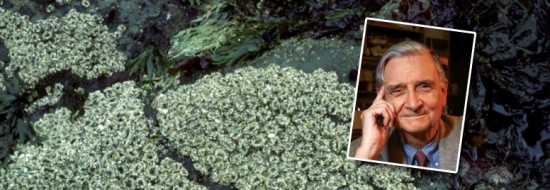

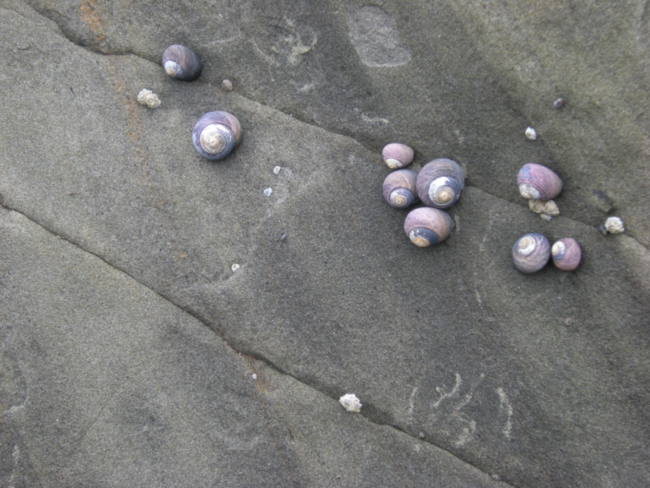
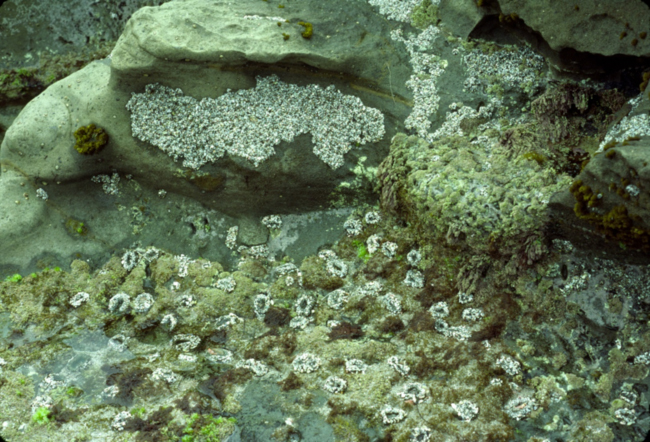
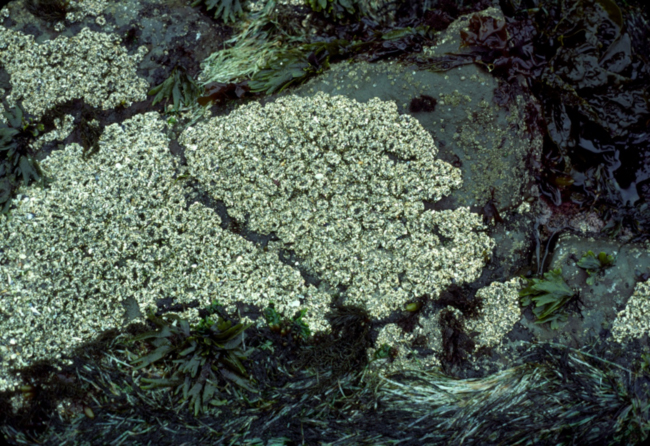
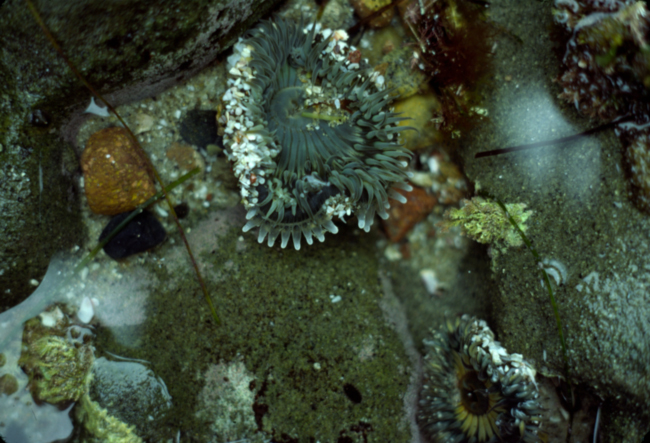


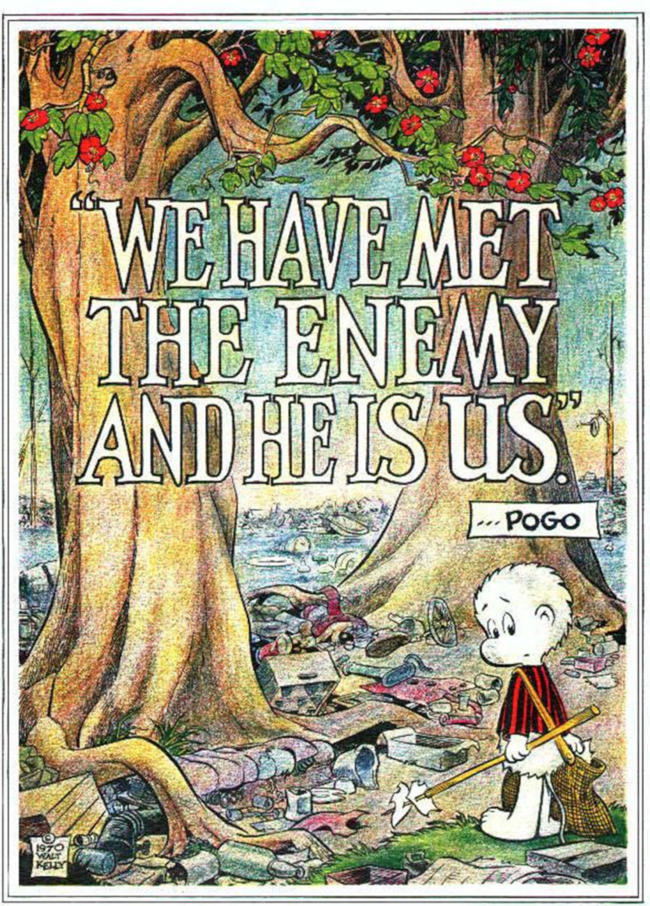
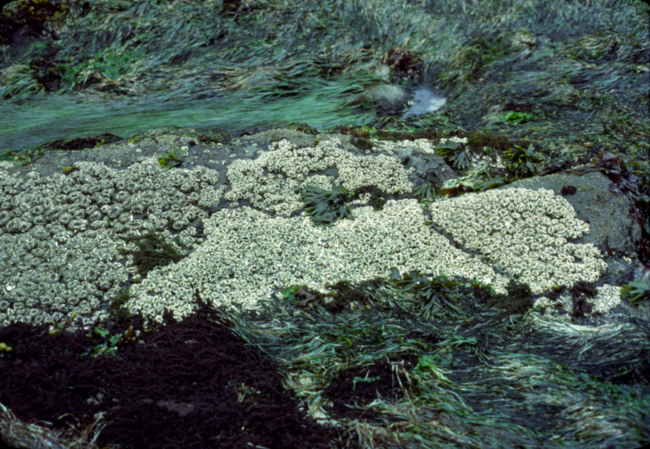



July 26, 2015 9:39 pm
Great piece. I clearly remember the conflict when E.O. published Sociobiology and the group that tried to get Harvard to ‘fire’ Wilson because if was fascist literature. As soon as I read a review of it I persuaded the Knox College Librarian to order TWO copies as I ordered my own.
I’ve always been intrigued by Wilson and his writings.
Dewey